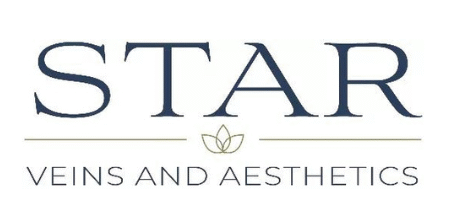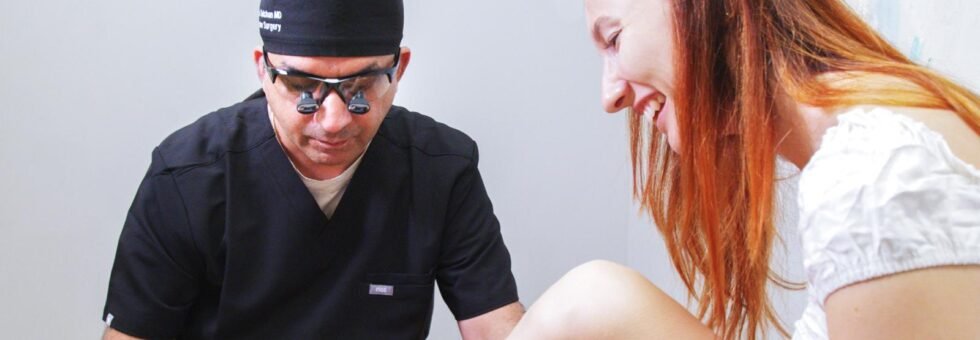What is the Success Rate of Laser Treatment for Spider Veins?
Spider veins, medically known as telangiectasias, are small, dilated blood vessels near the surface of the skin. They are often red, blue, or purple and resemble a spider web, hence the name. These veins commonly appear on the legs and face, affecting millions of people worldwide. While spider veins are typically harmless, they can be a cosmetic concern for many individuals. Fortunately, advancements in medical technology have made spider vein removal more effective and accessible. One of the most popular treatments for spider veins is laser treatment. This blog will delve into the success rate of laser treatment for spider veins, discussing its efficacy, advantages, potential risks, and what patients can expect.
Understanding Spider Veins and Varicose Vein Disease
Before exploring laser treatment, it’s important to understand the condition itself. Spider veins are often confused with varicose veins, but they are different. Varicose veins are larger, swollen veins that twist and turn, often causing discomfort and pain. In contrast, spider veins are smaller and usually do not cause physical symptoms. However, both conditions fall under the umbrella of varicose vein disease, a common vascular disorder.
Expert Insights: Dr. Gulshan Sethi’s Perspective
Dr. Gulshan Sethi, a renowned expert in vascular health, emphasizes the importance of personalized treatment plans for spider vein removal. According to Dr. Sethi, “Laser treatment is highly effective for most patients, but the success rate can vary depending on individual factors such as skin type, vein size, and overall health. It is crucial to have a thorough consultation and evaluation to determine the best treatment approach.”
Dr. Sethi also highlights the role of advanced laser technology in improving outcomes: “Modern lasers offer greater precision and safety, making them an excellent choice for treating spider veins with minimal discomfort and downtime.”
What Causes Spider Veins?
Several factors contribute to the development of spider veins:
- Genetics: A family history of spider veins or varicose veins increases the risk.
- Age: As people age, their veins can weaken, leading to the development of spider veins.
- Hormonal Changes: Pregnancy, menopause, and the use of birth control pills can trigger spider veins.
- Prolonged Standing or Sitting: Occupations that require long periods of standing or sitting can increase the risk.
- Obesity: Excess weight puts additional pressure on the veins.
- Sun Exposure: Prolonged sun exposure, especially on fair skin, can cause spider veins, particularly on the face.
Laser Treatment for Spider Veins: An Overview
Laser treatment is a non-invasive procedure that uses focused light energy to treat spider veins. The laser emits a specific wavelength of light that is absorbed by the blood within the veins, causing them to collapse and eventually be reabsorbed by the body. Over time, the treated veins fade away, leaving clearer skin.
Types of Laser Treatment
There are two main types of laser treatments for spider veins:
- Simple Laser Treatment: This is performed on the outside of the skin and is effective for small spider veins just beneath the surface.
- Endovenous Laser Treatment (EVLT): This is used for larger varicose veins. A laser fiber is inserted into the vein, delivering the laser energy directly to the vein wall.
Success Rate of Laser Spider Vein Removal
The success rate of laser treatment for spider veins is generally high, with studies and clinical experience showing significant improvement in most patients. The specific success rate can vary depending on several factors, including the size and location of the veins, the type of laser used, and the patient’s skin type.
Clinical Studies and Data
- Efficacy: Research indicates that laser treatment has a success rate of 70-90% in effectively reducing or eliminating spider veins. Multiple sessions may be required for optimal results.
- Patient Satisfaction: High levels of patient satisfaction are reported, with many patients experiencing significant cosmetic improvement and minimal discomfort.
- Long-Term Results: The results of laser treatment are generally long-lasting, although new spider veins may develop over time, necessitating additional treatments.
Advantages of Laser Spider Vein Removal
Laser treatment offers several benefits over other methods of spider vein removal, such as sclerotherapy or surgical options:
- Non-Invasive: Laser treatment does not require incisions or needles, making it a less invasive option.
- Minimal Downtime: Patients can typically resume their normal activities immediately after treatment.
- Precision: Lasers can target small and precise areas, making them effective for treating delicate areas like the face.
- Safety: When performed by a trained professional, laser treatment is safe and has a low risk of complications.
- Cosmetic Results: Laser treatment can improve the appearance of the skin with minimal scarring.
Potential Risks and Side Effects
While laser treatment for spider veins is generally safe, it is not without potential risks and side effects. Some patients may experience:
- Redness and Swelling: These are common immediately after the treatment and usually subside within a few days.
- Bruising: Some bruising may occur around the treated area but typically resolves within a week or two.
- Skin Discoloration: Temporary changes in skin color can occur but usually fade over time.
- Blistering and Scarring: Rarely, blistering or scarring can occur, especially if the treatment is not performed correctly.
- Pain or Discomfort: Some patients may experience mild pain or discomfort during the procedure, but this is usually well-tolerated.
What to Expect During and After Laser Treatment
During the Procedure
- Preparation: The treatment area is cleaned, and protective eyewear is provided to shield the eyes from the laser light.
- Treatment: The practitioner uses a handheld laser device to deliver pulses of light to the spider veins. The procedure typically lasts 15-30 minutes, depending on the size of the area being treated.
- Pain Management: A cooling device or gel may be used to minimize discomfort during the procedure.
After the Procedure
- Post-Treatment Care: Patients are advised to avoid sun exposure and apply sunscreen to the treated area. Compression stockings may be recommended to support the veins.
- Recovery: Most patients can return to their regular activities immediately. Any redness or swelling usually resolves within a few days.
- Follow-Up: Multiple sessions may be needed to achieve the desired results. Follow-up appointments are important to monitor progress and address any concerns.
Conclusion
Laser treatment for spider veins offers a high success rate and numerous advantages, making it a popular choice for those seeking to improve the appearance of their skin. While individual results can vary, most patients experience significant improvement with minimal side effects. Consulting with a qualified specialist like Dr. Gulshan Sethi can help ensure that the treatment plan is tailored to your specific needs, maximizing the chances of a successful outcome.
FAQs
1. How many laser treatments are needed to remove spider veins?
Most patients require 1-3 sessions to achieve optimal results. The exact number depends on the size and number of spider veins.
2. Is laser treatment for spider veins painful?
Patients may experience mild discomfort during the procedure, but it is generally well-tolerated. Cooling devices or gels can help minimize any pain.
3. Can laser treatment be used on all skin types?
While laser treatment is effective for many skin types, certain lasers are better suited for darker skin tones to minimize the risk of pigmentation changes. A consultation with a specialist can determine the best approach.
4. What is the cost of laser spider vein removal?
The cost varies based on the size of the area being treated and the number of sessions required. It is best to consult with a clinic to get an accurate estimate.
5. Are there any alternatives to laser treatment for spider veins?
Yes, alternatives include sclerotherapy, radiofrequency ablation, and surgery. The best treatment option depends on the severity and location of the veins, as well as patient preference.
Laser spider vein removal is a highly effective and minimally invasive treatment option for those looking to improve their skin’s appearance and eliminate unsightly spider veins. With high success rates and the expertise of professionals like Dr. Gulshan Sethi, patients can achieve clear, vein-free skin and regain their confidence.

